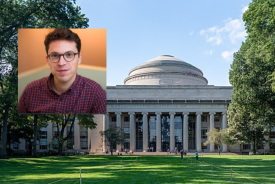Elite colleges are still having trouble recruiting lower income and non-white students to enroll, the Huffington Post reported.
In a recent study published by the Georgetown University Center on Education and the Workforce, researchers found diversity of race and social class to be an issue in selective private schools.
In theory, "the education system is colorblind," Anthony Carnevale, the study's co-author and director of The Georgetown University Center on Education and the Workforce, said. "In fact, it operates, at least in part, as a systematic barrier to college for many minorities who finish high school unprepared for college."
The study analyzed 4,400 post-secondary education institutions over a span of 15 years and one statistic rang true above the others:
"Since 1995, 82 percent of new white enrollments have gone to the 468 most selective colleges, while 72 percent of new Hispanic enrollment and 68 percent of new African-American enrollment have gone to the two-year and four-year open-access schools."
The New York Times backed this statistic up in a recent article, stating private institutions with more selective acceptance rates are less likely to offer low-income students Pell grants. In contrast, those same students are far more likely to receive the need-based grant from a less-selective college.
Vassar College president Catharine Bond Hill had a pointed message for competitive schools with low-diversity levels.
"It's a question of how serious you are about it," she told the Times of colleges with multibillion-dollar endowments and numerous tax exemptions that recruit few poor students. "Shame on you."
The Georgetown researchers emphasized recruitment in their study as a main factor in the lack of diversity at the nation's top colleges. Their solution to diversify these selective campuses is for the schools to reach out to low-income students, but money remains a huge barrier.
Pell grants are meant for families with annual incomes of $30,000 or less, but tuition at a top-tier school is just under $60,000 in most instances. As reported by Sallie Mae, this is preventing students and their families from even considering sending applications to top schools.
© 2025 University Herald, All rights reserved. Do not reproduce without permission.








